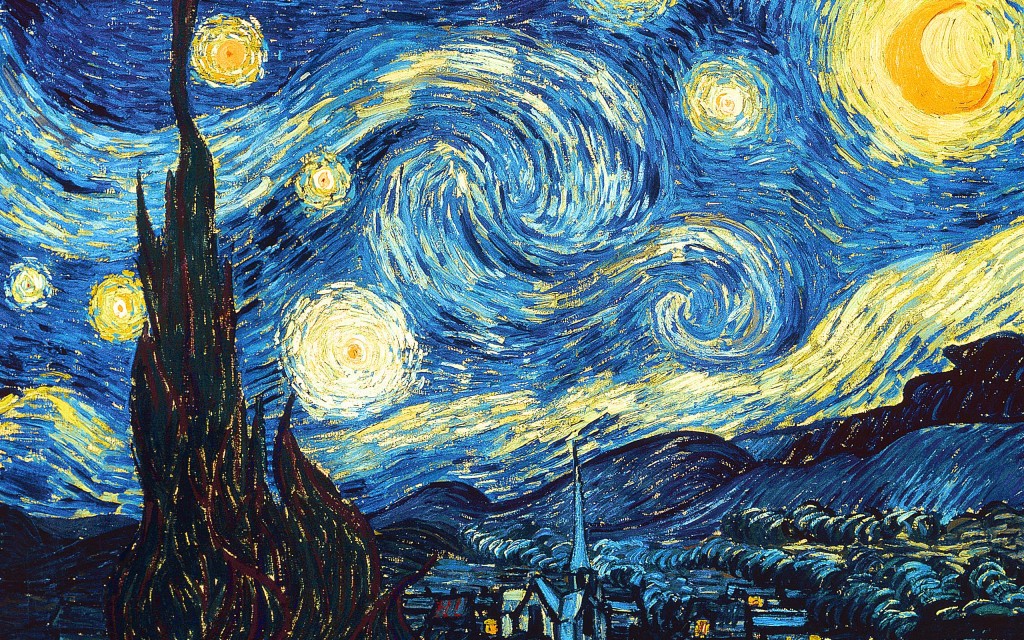
The Starry Night, 1890, by Vincent van Gogh. Painted at the Saint Paul asylum in the year of his death at age 37
Victor Hugo and Vincent van Gogh never met in person. However an avid reader of fiction, Van Gogh, was extremely moved by a passage in Victor Hugo‘s masterwork, Les Miserables. This is according to William J. Havlicek, PHD, a Vincent van Gogh scholar and author of Van Gogh’s Untold Journey. Havlicek poured over van Gogh’s 900 letters to create his biography. Some of the letters have only recently been discovered.
The passage from Les Miserables is as follows:
“He was out there alone with himself, composed, tranquil, adoring, comparing the serenity of his heart to the serenity of the skies, moved in the darkness by the visible splendors of the constellations and the invisible splendor of God, opening his soul to the thoughts that fall from the Unknown. In such moments, offering up his heart as the flowers of night emit their perfume, he lit like a lamp in the center of the starry night, expanding in ecstasy the midst of creation’s universal radiance, perhaps he could not have told what was happening in his own mind; he felt something floating away from him, and something descending upon him, mysterious exchanges of the soul with the universe.”
It is worth noting that van Gogh , the son of a pastor, had a deep sense for the poor and the unwanted. He was attracted to the works of Charles Dickens and Victor Hugo , both proponents, as himself, of the social welfare movement in Europe.
As a man in his early 20s, van Gogh gave away all his worldly belongings to the poor in response to his call to become a pastor. The Dutch Reform church, however, rejected van Gogh as Pastor material considering him too “common” to draw a congregation. However, according to the letters of van Gogh, the artist remained a man of faith all his life.
Van Gogh was educated and multi-disciplined. He was a painter from the age of 27 until he died at 37. Unable to make a livelihood as a painter, he relied on the patronage of his younger brother, Theo, an art dealer.
Based on new research from the Pulitzer Prize winning team of Steven Naifeh and Gregory White Smith, it appears that van Gogh suffered grand mal epilepsy and dementia in the last year and a half of his life . This was a result of brain damage due to the abuse of the liquor, absinthe, which many artists of that time, including Baudelaire, and Oscar Wilde , used with great proficiency. New evidence also indicates that van Gogh probably did not commit suicide but that he was killed by some local town ruffians when a gun malfunctioned.
Literature heavily influenced the art tradition of the 19th century. Illustration was an art form — the books of Victor Hugo included illustrations. Artists as varied as William Blake, Gustav Dore, and Aubrey Beardsley emerged from that tradition of illustration.
Van Gogh was never approached to illustrate a book. Van Gogh had to read and be inspired by Victor Hugo and then paint that vision.
“I dream of painting and then I paint my dream,” van Gogh reportedly said.
As a culture we are fortunate that Hugo and van Gogh met “in the center of the starry night” as Hugo wrote in Les Miserables. For without Hugo’s writing, van Gogh may never have been inspired in the way that he was to paint what has become one of the most recognized pieces of work of he 19th century.







